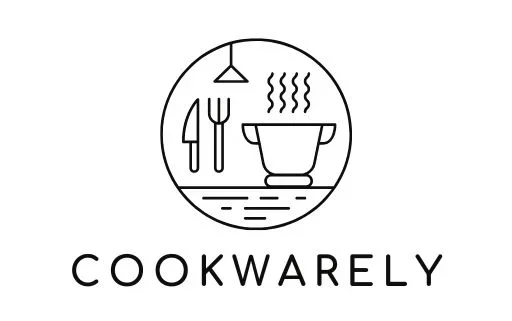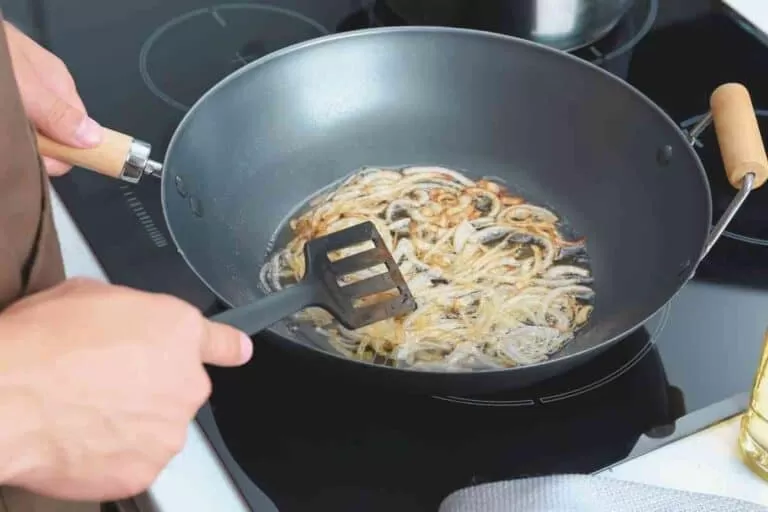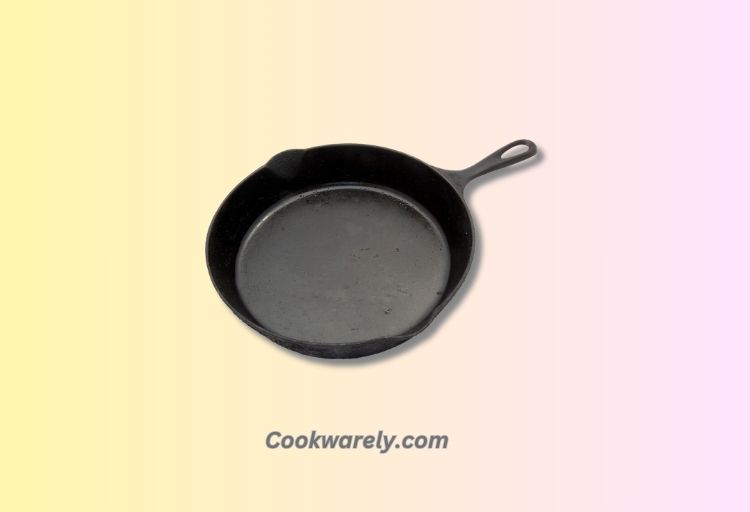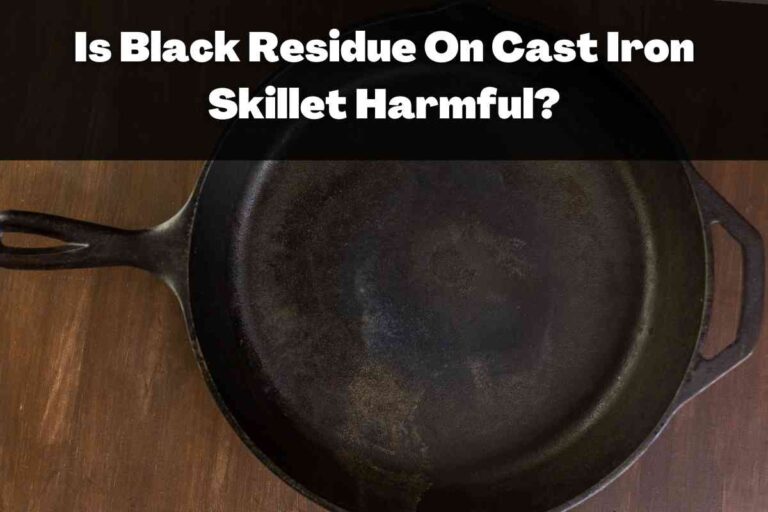How To Tell If A Pan Is Oven-Safe? 8 Ways!
In order to determine the oven safety of a pan, examine its material (copper, stainless steel, etc.), handle type (silicone/metal), and the existence of nonstick coatings.
In addition, check the manufacturer’s directions for temperature limitations, and avoid using wood or plastic oven handles. To ensure safe and successful oven cooking, always use caution.
- Assess the pan’s construction material. Materials like stainless steel and cast iron are typically safe for oven use, while non-stick coatings may have limitations.
- Check the handle material; silicone or metal handles are oven-safe, whereas wood or plastic handles can be problematic in the oven.
- Always refer to the manufacturer’s instructions for specific guidance on a pan’s oven safety, including recommended temperature limits.
Contents
8 Ways To Tell If A Pan Is Oven-Safe
| Consideration | What to Check | Oven-Safe | Precautions |
|---|---|---|---|
| Material | Copper, stainless steel, aluminum, ceramic, cast iron | Yes | Check for additional coatings or components. |
| Non-Stick Coatings | Teflon (PTFE) and temperature limitations | Be cautious | Avoid high heat, especially under a broiler. |
| Handle | Silicone, rubber, and metal handles are safe | Yes | Avoid wood or plastic handles for oven use. |
| Detachable Handles | Increased heat resistance and versatility | Yes | Consider pans with detachable handles. |
| Lid | Stainless steel or cast iron lids (check instructions) | Potentially | Verify manufacturer instructions for lid safety. |
| Precautions in the Kitchen | Various safety measures when using pans in the oven | N/A | Follow safety tips for successful oven cooking. |
| Oven-Safe Factors | Skillet materials and temperature limits | Varies | Understand temperature limits for each material. |
| Oven-Safe Symbol | Manufacturer-specific icons (check pan bottom) | Varies | Consult manufacturer documentation for guidance. |
Key Takeaways
- The type of material your pan is made of plays a crucial role in determining its oven safety. Stainless steel and cast iron are generally reliable choices.
- Pay attention to the handle material; opt for silicone or metal handles and avoid wood or plastic for oven use.
- Non-stick coatings have temperature limitations, so exercise caution when using them in the oven.
- Always consult the manufacturer’s instructions to know the specific temperature limits for your pan.
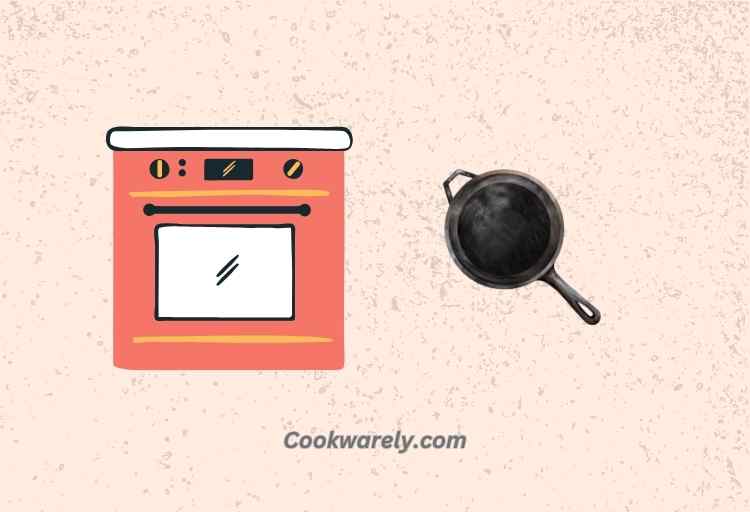
Facts About Oven-safe Pan
- Some pans come with detachable handles, providing added versatility and heat resistance. You can remove them before placing the pan in the oven.
- While slow cooker stoneware inserts are often oven-safe, this doesn’t apply to the heating element or lid. It’s essential to differentiate between parts.
- Enameled cast iron pans are oven-safe up to 500°F (260°C), but it’s wise to avoid prolonged exposure to high heat under a broiler.
- Look for manufacturer-specific symbols on the pan’s bottom. Unfortunately, there’s no universal standard for these symbols, so consult the manufacturer’s documentation for clarity.
- Avoid placing empty frying pans in the oven, as this can cause them to warp. Always have food or liquid in the pan when using the oven.
How To Tell If A Pan Is Oven-Safe?
Step 1: Checking Pan Materials
When it comes to determining if your pan can handle the heat of the oven, the material it’s made from is a primary consideration. Different materials have varying degrees of tolerance for high temperatures. Here’s a breakdown:
- Copper: Copper pans are generally oven-safe. However, take note of any other materials or coatings present.
- Stainless Steel: Stainless steel is a reliable choice for oven use. These pans can often withstand high temperatures without issues.
- Aluminum: Aluminum pans are also commonly oven-safe. However, the presence of non-stick coatings should be considered.
- Ceramic: Ceramic-coated pans are usually safe for the oven, but it’s essential to check the manufacturer’s recommendations.
- Cast Iron: Cast iron pans are renowned for their oven versatility. They excel at both baking and broiling.
Step 2: Consideration of Coatings
Non-stick coatings, such as Teflon (PTFE), have become popular in cookware for their convenience. However, they come with temperature limitations and potential risks when exposed to high heat. Here’s what you need to know:
Non-stick coatings like Teflon are not suitable for broiling or extreme heat. When subjected to high temperatures, they can release toxic fumes, posing health hazards.
Therefore, if your pan features a non-stick coating, it’s essential to be mindful of its temperature limitations. In such cases, consider alternative cookware for high-heat cooking methods.
Step 3: Inspecting Handles
Handles may seem like a minor detail, but they play a crucial role in a pan’s oven safety. Here’s a quick guide to handling materials:
- Silicone, Rubber, and Metal Handles: Pans with handles made of silicone, rubber, or metal are generally oven-safe. These materials can withstand the heat of the oven without issues.
- Wood and Plastic Handles: Pans with wood or plastic handles are not oven-safe. Exposing these materials to high temperatures can lead to damage or even safety hazards.
- Detachable Handles: Some pans come with detachable handles. These are a sign of increased heat resistance and versatility. Detachable handles allow you to remove them before placing the pan in the oven, ensuring safety and convenience.
Step 4: Lid Examination
Now, let’s consider the lid. Can it join the pan in the oven? Here’s what you should keep in mind:
- Stainless Steel or Cast Iron Pan Lids: Some stainless steel or cast iron pan lids may be oven-safe. However, always refer to the manufacturer’s instructions to confirm their oven compatibility.
- Slow Cookers: If you’re using a slow cooker, the stoneware insert is often oven-safe, but this doesn’t apply to the heating element or the lid. Always check the manufacturer’s guidelines for your specific slow cooker model.
Step 5: Precautions in the Kitchen
Knowing whether your pan is oven-safe is essential, but it’s equally important to exercise caution in the kitchen to ensure the safety and longevity of your cookware. Here are some crucial precautions:
- Don’t Assume: Never assume that a pan is oven-safe. Always check the materials, coatings, handles, and lids before using it in the oven.
- Avoid Sudden Temperature Changes: Rapid temperature changes can cause pans to warp or even crack. When transitioning from stovetop to oven or vice versa, allow the pan to adjust gradually to the new temperature.
- Quality Oven Mitts: Invest in high-quality oven mitts to protect your hands from burns when handling hot pans or bakeware.
- Keep a Close Eye: When using your pan in the oven, keep a watchful eye on your food to prevent overcooking or burning.
- Utensil Caution: Be cautious with utensils, especially metal ones, as they can scratch non-stick surfaces. Wooden or silicone utensils are gentler on your cookware.
- No Broiling in Non-Stick Pans: Never use non-stick pans under a broiler, as the intense heat can damage the non-stick coating and release harmful fumes.
- No Empty Pans in the Oven: Avoid placing empty frying pans in the oven, as this can cause them to warp.
- Fire Safety: Keep loose items, such as towels and curtains, away from open flames in the kitchen to prevent accidents.
Step 6: Oven-Safe Factors
Understanding the factors that contribute to a pan’s oven safety is essential. Let’s delve deeper into these considerations:
- Materials: Skillets made of copper, cast iron, stainless steel, or aluminum are generally oven-safe. Nonstick cookware is not suitable for broiling.
- Temperature Limits: All-metal pans are oven-safe to at least 350°F (175°C). Some stainless steel and hard-anodized aluminum collections can withstand temperatures of up to 500°F (260°C).
- Cast-Iron Skillets: Cast iron skillets are exceptionally versatile and can safely be used in both the oven and under the broiler.
- Enameled Cast Iron: Enameled cast iron is oven-safe up to 500°F (260°C). However, it’s advisable to avoid prolonged exposure to high heat under a broiler.
- Oven-Safe Symbol: Keep an eye out for manufacturer-specific icons or symbols on the skillet’s bottom. These indicators provide valuable information about the pan’s oven safety and temperature limits. Unfortunately, there’s no universal standard for these symbols, so it’s crucial to consult the manufacturer’s documentation.
Conclusion
Finally, determining if your pan is oven-safe requires examining its material, and handle type, and reviewing the manufacturer’s temperature guidelines.
You can ensure safe and successful cooking experiences while making the most of your cookware by following these three important guidelines. To enjoy tasty dishes without worry, always prioritize safety in the kitchen.
FAQs
Can I Use a Pan with a Wooden Handle in the Oven?
No, pans with wooden handles are not oven-safe. The wood can become damaged or catch fire when exposed to high temperatures.
What’s the Maximum Oven Temperature for Stainless Steel Pans?
Most stainless steel pans are oven-safe up to 500°F (260°C), but it’s advisable to check the manufacturer’s recommendations.
Are All Non-stick Pans Unsuitable for the Oven?
Not all non-stick pans are unsuitable, but they do have temperature limitations. Avoid using non-stick pans under a broiler or at extremely high temperatures.
